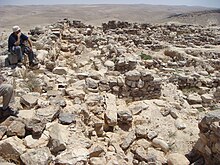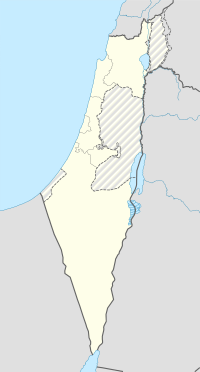Horvat_Uza
Horvat Uza
Archaeological site in Israel
Horvat Uza (Hebrew: חורבת עוזה) is an archaeological site located in the northeast of the Negev desert in Israel. The site is located in the east of the Arad Valley and overlooks Nahal Qinah (Qinah Valley). In ancient times, forts were established there to control the wadi road, linking Judea to Arabah and the territory of Edom. It was mentioned as Qina by Josephus in book 15 of his Antiquities.[1]
This article has multiple issues. Please help improve it or discuss these issues on the talk page. (Learn how and when to remove these template messages)
|
Several inscribed potsherds with inscriptions in Hebrew, dated to the 7th-century BCE, were found in Horvat Uza.

